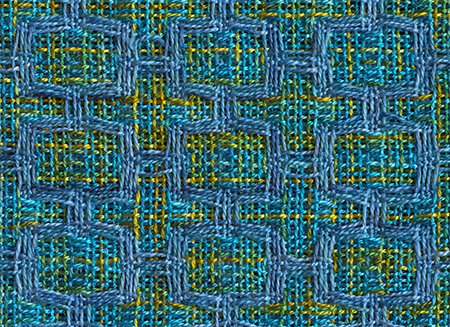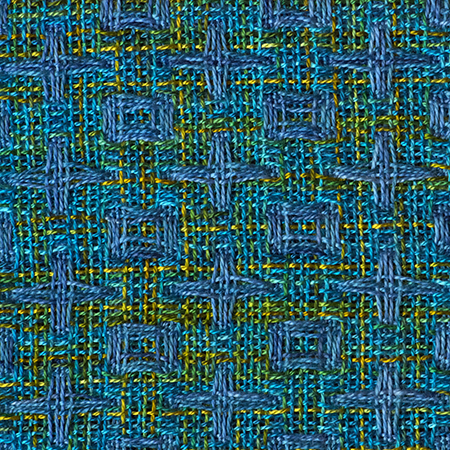Record Keeping
Marcy Petrini
January, 2017
Happy New Year! It always seems that it takes a bit of time to get back on track after the holidays, especially since I don’t think of the season being over until after Roc Day. In my native Italy, as a child, Epiphany concluded the holidays, so I am grateful that in the Gulf Coast states we celebrate Roc Day, which technically is January 7, the day after Epiphany, when allegedly women returned to their fiber crafts. After Roc Day, I can get back to “normal.”
We usually celebrate Roc Day the first Saturday of January after the New Year weekend, but this year we were lucky that the first Saturday was indeed on January 7th. What we weren’t so lucky about was the weather – snow, yes, snow, in Mississippi and heavy rain, some places freezing, in Mississippi and Louisiana, prevented some from attending the fun. But the Spinners and Weavers of Imperial Calcasieu Guild of Lake Charles, LA, organized a wonderful day at Dry Creek Baptist Camp, Dry Creek, LA, in a remote and peaceful setting.
Now I am back to the big project that I started a year and an half ago: cataloging all of my work, pieces and samples. It seems wasteful of time, but I find it very helpful for my teaching, writing, and for recalling yarns, setts, beats and any problems I may have encountered in the past.
I use this spreadsheet or a modification of it, depending on what I am weaving, for every piece that I make:
The spreadsheet for planning a weaving project (click on this link to download the Excel spreadsheet)
n.b. This file will launch a new window or tab, prompting action on your part.
In Microsoft's Edge, a box will open.
In Mozilla's Firefox, a new window will open.
In Google's Chrome, a tab will appear at the bottom of the browser.
When teaching, we often don’t have access to a computer, so we use a printed form and then we do the calculations by hand:
The form for manually planning a weaving project (a PDF will open in a new window).
In addition to the information in the spreadsheet, I add a drawdown if the structure warrants it. At the end, I add a snapshot of the piece. I print everything and I attach yarns. The reason for printing is that photographing the yarns is not enough, I really need to see them and feel them. Also, should something happen to the computer, at least I would have a printed copy, even though files are backed up electronically daily.
Once all that is done, I add the piece to a database that includes an access number, title, how it was woven, warp and weft yarns and their colors, piece location and any notes that I may want to remember. The few pieces that I have given away don’t appear there, I have a separate listing. This seems laborious, but it’s not, it takes just a few minutes.
The spreadsheet makes it easy to search; for example, if I want to know in which pieces I used 20/2 silk and how I set it for a variety of structures.
The access number was a brain child of my husband, who was frustrated when he had to wait around to photograph pieces, as I fumbled searching for them and then realizing that what I had given him wasn’t what I thought it was. After forty years of weaving, well, there are a lot of pieces named “red silk shawl”.
This is the access number of a scarf I finished this fall:
WV 20160405 20161010 Deflected Doubleweave Scarf
The WV indicates weaving, since I also catalog spinning and knitting; 20160405 is the starting date – year, month, day – meaning when I started planning it, not weaving it. The 20161010 is the ending date, which is the day when the wet finishing was done, snapshots were taken, the spreadsheet was printed, and the piece was entered in the database. The last part of the access is obviously the name.


Here is the front and back of the fabric – these are not my snapshots, they are Terry’s photography.
I have used some form of record keeping, since I started weaving, a suggestion made by my first weaving instructor. So, once I started the database, it was easy enough to go backwards to enter all of the pieces I still have. Or so I thought.
Sometimes in the early 2000 I started using electronic planning sheets, but not rigorously until 2004. Thus it was easy to build the database going backwards, until about 2004. Further back I had to rely on planning sheets filled by hand – which would have been fine, except I realized what an incredible poor record keeper I had been! I am back to the 1990s, and I have yet to find a single complete planning sheet. Dates are missing, yarns are attached but not labelled, and notes are legible but incomprehensible. There are some pieces that I really want to find because they are illustrative and educational, and this has been a very frustrating, long and maddening chore.
My suggestion is: use a planning sheet of some kind, either the one attached or one of your own making; keep careful notes because years down the road, you won’t remember that yarn, you won’t know the sett, and you will have forgotten what your impression of the work was at the time. Did you like it? What would you do differently if you were to repeat it? There is nothing like personal experience and a good way to recall it.
Please email comments and questions to
